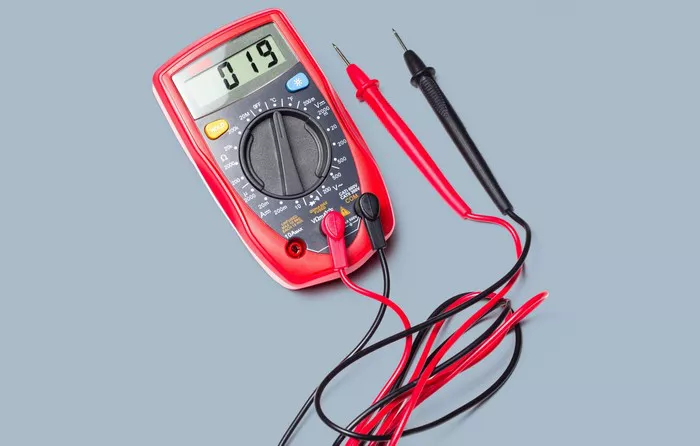Electrical systems are integral to modern life, making safety and efficiency in electrical work crucial. One of the fundamental tools for electricians, engineers, and DIY enthusiasts is the voltage tester. Understanding its functionality, types, and applications ensures accurate voltage measurements and helps prevent electrical hazards. This guide provides a detailed look at voltage testers, their working principles, and best practices for their use.
What Is a Voltage Tester?
A voltage tester is a device used to determine the presence of electrical voltage in circuits, outlets, or electrical components. It ensures that circuits are either live or de-energized before performing maintenance or installation tasks. Voltage testers are essential for diagnosing electrical faults and verifying power supply status.
How Voltage Testers Work
Voltage testers operate by detecting the presence of electrical potential difference between two points. Some testers work by direct contact with live conductors, while others use non-contact methods that sense electromagnetic fields around live wires. Depending on the design, voltage testers may provide visual, auditory, or digital feedback indicating voltage presence.
Types of Voltage Testers
There are several types of voltage testers, each suited for different applications and accuracy levels. Below are the most commonly used voltage testers:
Non-Contact Voltage Testers (NCVTs)
Working Principle: These testers detect the electromagnetic field generated by AC voltage without making direct contact.
Advantages:
- Safe to use since they do not require direct contact.
- Compact and easy to carry.
Disadvantages:
- May not work accurately in shielded cables or metal conduits.
- Cannot measure exact voltage levels.
Best Uses: Checking live wires, outlets, and circuit breakers.
Contact Voltage Testers
Working Principle: These testers require physical contact with the conductor to detect voltage presence.
Advantages:
- Provides a more reliable indication of voltage presence.
- Generally more affordable than non-contact models.
Disadvantages:
- Requires physical contact, increasing risk if not used properly.
Best Uses: Checking sockets, electrical panels, and wiring systems.
Neon Voltage Testers
Working Principle: Consists of a small neon bulb that lights up when voltage is detected between two probes.
Advantages:
- Simple and inexpensive.
- No batteries required.
Disadvantages:
- Limited voltage range.
- Can be unreliable in low-light conditions.
Best Uses: Basic voltage presence checks in household and industrial settings.
Multimeters
Working Principle: Measures voltage, resistance, and current by connecting probes to the circuit.
Advantages:
- Provides precise voltage readings.
- Offers additional electrical measurements.
Disadvantages:
- More complex to use.
- Bulkier and more expensive than basic testers.
Best Uses: Diagnosing electrical faults and measuring precise voltage levels.
Solenoid Voltage Testers
Working Principle: Uses a solenoid coil to indicate voltage presence by movement or sound.
Advantages:
- Durable and robust for industrial applications.
- Works in both AC and DC circuits.
Disadvantages:
- Heavier than other testers.
- Generates a small amount of heat.
Best Uses: Troubleshooting and industrial electrical work.
Digital Voltage Testers
Working Principle: Uses digital circuits to detect and display voltage readings.
Advantages:
- Highly accurate.
- Clear digital display for readings.
Disadvantages:
- Requires battery power.
Best Uses: Precision voltage measurement in various applications.
How to Use a Voltage Tester Safely
Using a voltage tester properly is crucial to ensuring personal safety and accurate results. Follow these safety guidelines:
Verify Tester Functionality: Before using, test the voltage tester on a known live source to confirm it is working correctly.
Wear Safety Gear: Use insulated gloves and safety glasses when working with electricity.
Check Tester Ratings: Ensure the tester is rated for the voltage range of your application.
Avoid Moisture: Do not use a voltage tester in wet conditions to prevent electric shock.
Use Proper Handling Techniques: Do not touch exposed metal parts when testing live circuits.
Choosing the Right Voltage Tester
Selecting the right voltage tester depends on the application and required accuracy. Consider these factors:
Voltage Range: Ensure the tester supports the voltage levels you will be working with.
Type of Testing: For quick checks, non-contact testers are ideal, while multimeters are better for precise measurements.
Safety Features: Look for testers with insulated bodies, overload protection, and compliance with industry standards.
Ease of Use: Simple tools like neon testers suit beginners, while digital testers are better for professionals.
Common Issues and Troubleshooting
Even with proper usage, voltage testers may encounter issues. Here are some common problems and solutions:
Tester Does Not Detect Voltage: Check battery (if applicable) and ensure proper contact with conductors.
False Positives in Non-Contact Testers: Nearby electromagnetic fields or static charge can cause inaccurate readings; verify with another tester.
Inconsistent Readings: Ensure test leads are in good condition and make solid connections.
Conclusion
Voltage testers are indispensable tools for anyone working with electrical systems. Understanding the different types, working principles, and safety protocols helps ensure accurate and safe voltage detection. Whether you are a professional electrician or a DIY enthusiast, choosing the right voltage tester and using it correctly will improve efficiency and prevent electrical hazards. By following best practices and troubleshooting common issues, you can confidently perform electrical tests and maintenance tasks with ease.


